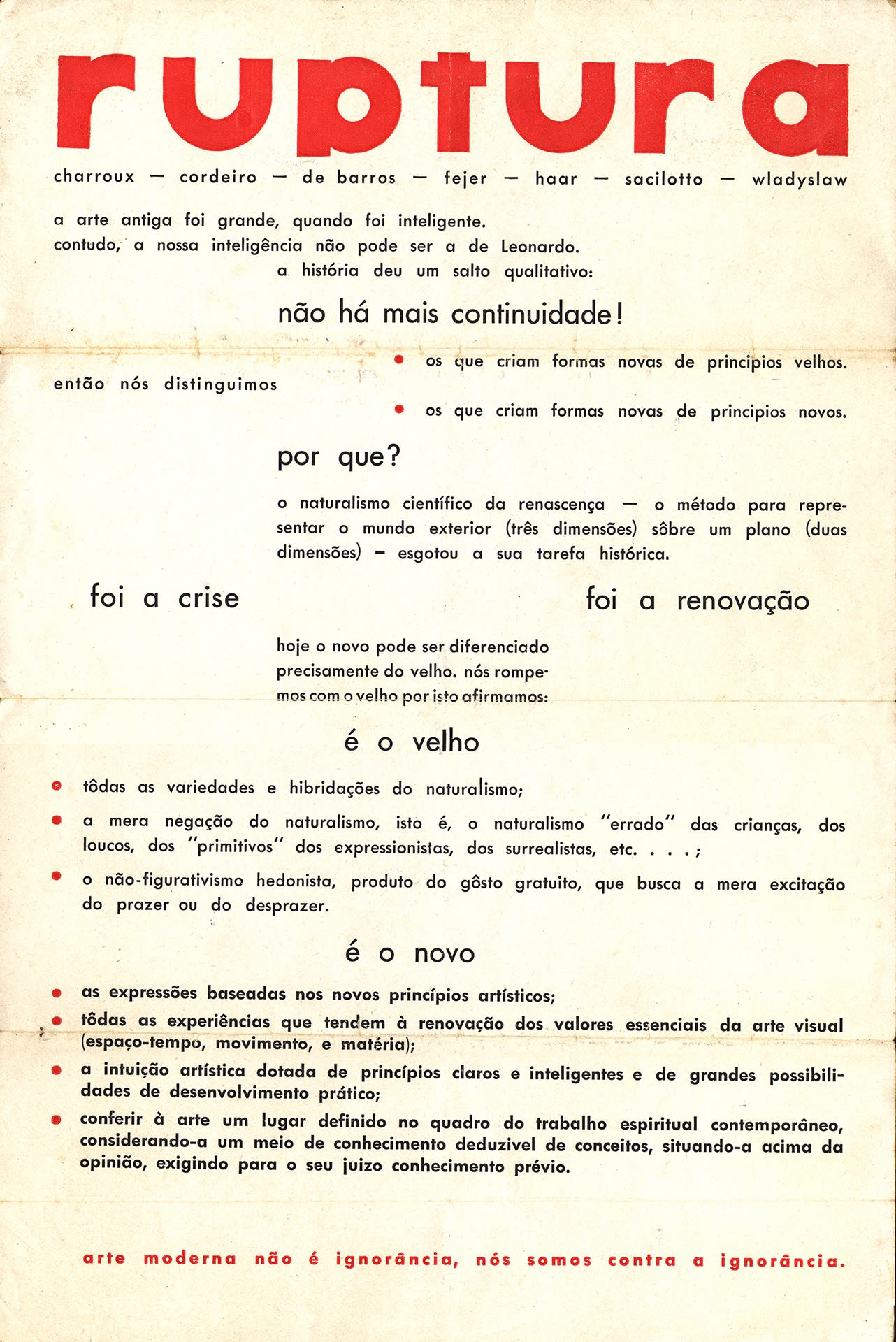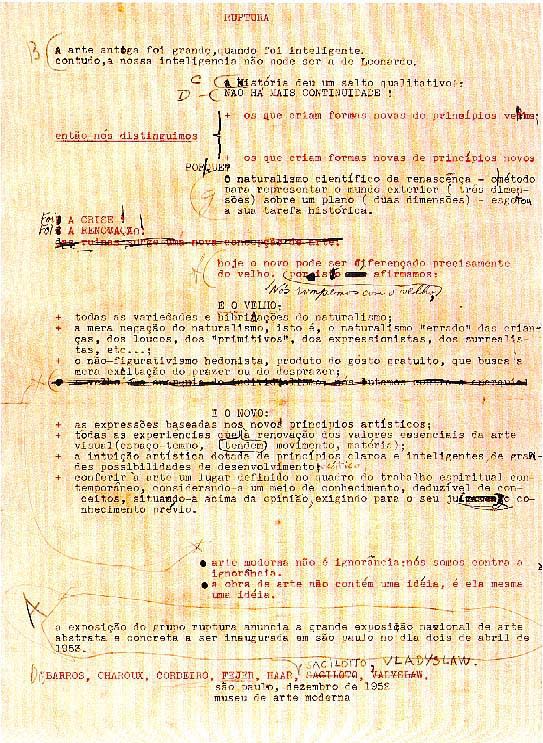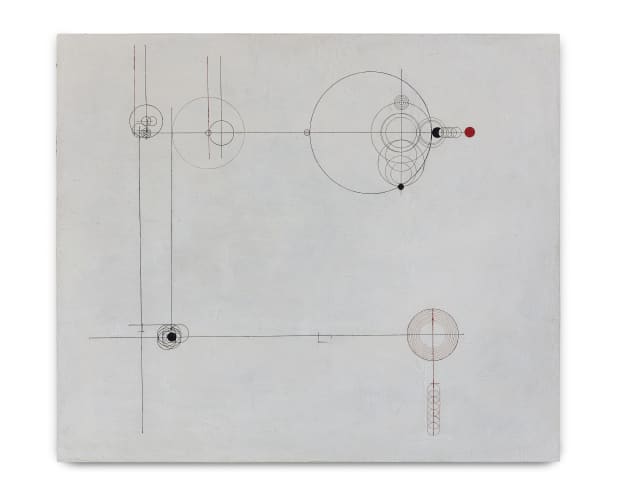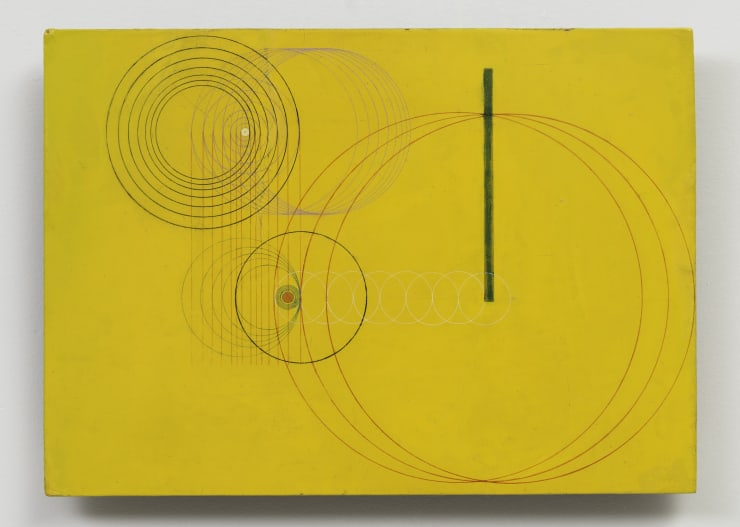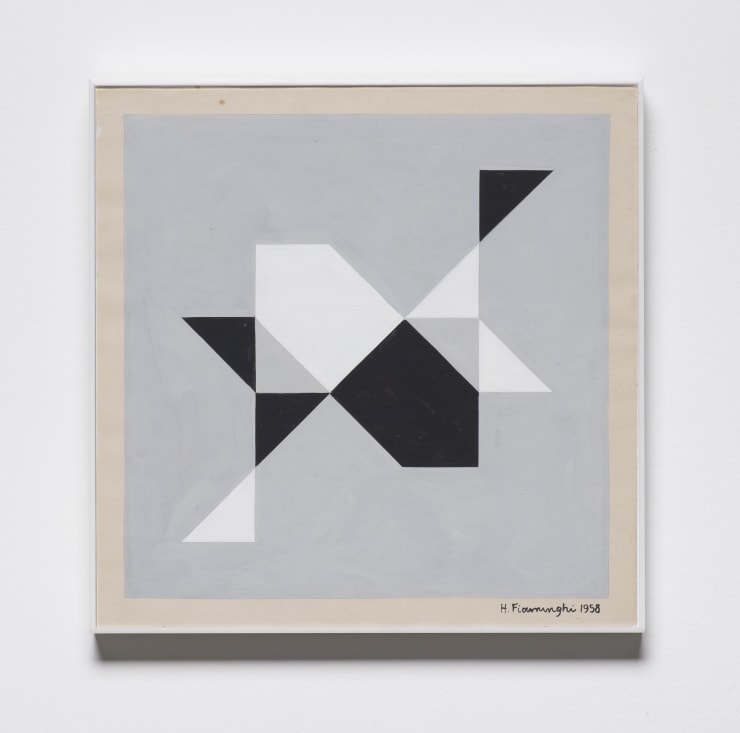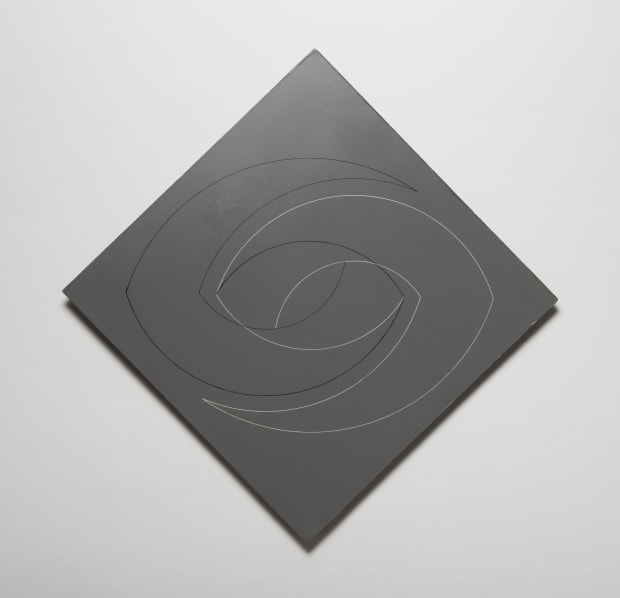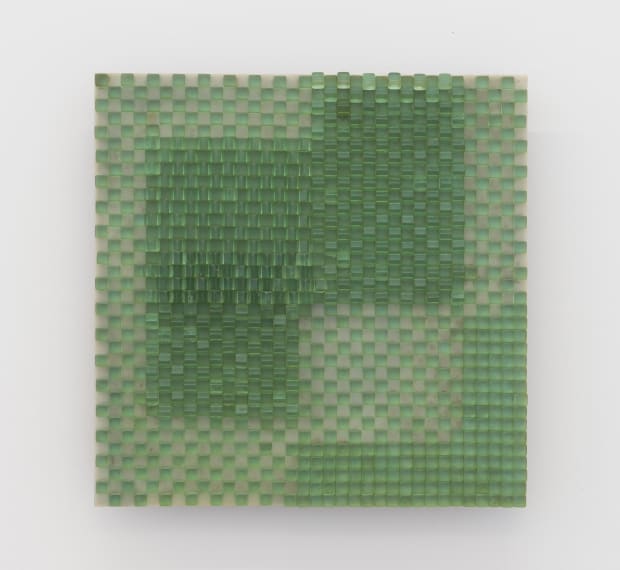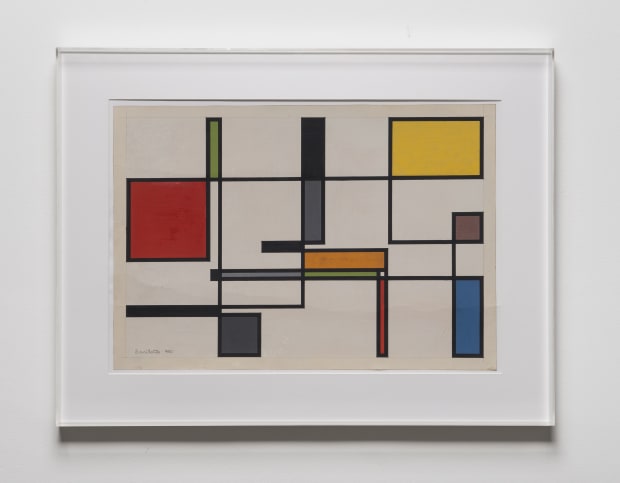-
ArtBasel 'OVR:20c': Ruptura
-
Aiming to foster greater awareness internationally concerning the importance of the Brazilian concrete art movement, for this special edition of ArtBasel, Luciana Brito Galeria is featuring a set of historical works by artists of the Grupo Ruptura: Waldemar Cordeiro (1925, Rome, Italy – 1973, São Paulo, Brazil), Geraldo de Barros (1923, Chavantes, Brazil – 1998, São Paulo, Brazil), Luiz Sacilotto (1924 – 2003, São Paulo, Brazil), Kazmer Féjer (1923, Pécs, Hungary – 1929, Sesimba, Portugal), Maurício Nogueira Lima (1930, Recife, Pernambuco – 1999, Campinas, Brazil), and Hermelindo Fiaminghi (1920 – 1999, São Paulo, Brazil).
By introducing concretism in Brazil in the 1950s, the artists of the Grupo Ruptura were largely responsible for a renewal of the values and creative process of visual art, following an aesthetic approach more related to constructivism, with pure colors and geometric lines – that is, a more universal art, accessible to everyone: “the artwork does not contain an idea, it is itself an idea.”1 The relevance of the Grupo Ruptura – formed by the artists Waldemar Cordeiro, Geraldo de Barros, Luiz Sacilotto, Lothar Charoux, Leopold Haar, Lothar Charoux, Anatol Wladyslaw and Kazmer Féjer, and later joined by Maurício Nogueira Lima, Hermelindo Fiaminghi and Judith Lauand – has been increasingly recognized in recent decades not only in Brazil, but also internationally. As part of this process, for 25 years Luciana Brito Galeria has been promoting broader institutional recognition of artists such as Geraldo de Barros and Waldemar Cordeiro, who were key figures of this movement and today are well represented in important institutions, while also being the subjects of significant long-term research projects that are now underway. In 2022, the history of Brazilian art is celebrating the 70th anniversary of the Ruptura movement’s inaugural exhibition – held at the Museu de Arte Moderna de São Paulo (MAM-SP) – and then 2023 will mark the 50th anniversary of the passing of Waldemar Cordeiro.
The movement, with the stated intention to “break with the old”2 began officially in 1952 with an exhibition at the Museu de Arte Moderna de São Paulo and the release of a manifesto, both entitled Ruptura. This important moment for the history of art in Brazil arose in a context of an industrial and population boom in the city of São Paulo, the cradle of the movement. Practically all the Ruptura artists were immersed in this effervescence daily, through either their work or their engagement in the visual art scene then being transformed by the advent of the Bienal de São Paulo and important museums, such as the aforementioned MAM-SP as well as the Museu de Arte de São Paulo (MASP-SP). With a keen awareness of the various other art trends, the concrete movement was based on years of studies and conversations, mainly around the pivotal figure of Cordeiro, who organized meetings among artists to debate art, politics and philosophy, including the ideas of the German philosopher Konrad Fiedler, the theory of pure visibility, and the Gestalt concept of form. The participation of the Swiss artist Max Bill at the 1st Bienal de São Paulo, in 1951, was also fundamental for the concept of concrete art in Brazil, bringing to the country a deeper reflection concerning constructivism and the neoplasticism of the Bauhaus.
Waldemar Cordeiro was fundamental for the establishment of the concretist movement in Brazil. In his interdisciplinary research, he espoused painting in its essence, with basic lines and colors sustained in their own right, without the support of figurative representation. He was outstanding for his objective and rational art, closely associated to his theoretic studies, as well as for his investigation into industrial elements and materials. Cordeiro worked to achieve an art accessible to everyone, seeking a collective sense that was also aligned with technology, design and landscaping. His research in art was always associated with a social and political concern.
One of the most versatile artists of the history of Brazilian art and a founding member of the Grupo Ruptura, Geraldo de Barros worked in various artistic languages, always with a concern for the socialization of art. He delved into the study of Gestalt and its theory of form, couched in terms of a simple, direct, homogeneous and regular structure that was also functional and informative, with an emphasis on mathematical principles and pictorial organization. His production evinced a yearning for a more democratic and just society.
Defined by Waldemar Cordeiro as the “mainstay of concrete art,”3 Luiz Sacilotto produced paintings that dealt with the principle of equity between figure and background, with a strong influence from industrial and architectural approaches. The artist also used elements from constructivism and explored the tensions between fullness and emptiness, positive and negative, as well as optical illusions, being one of the pioneers of op art in Brazil.
Hermelindo Fiaminghi was responsible for the graphic pieces and publicity work of the Grupo Ruptura, and this influence was notable in his work. His compositions present a nearly rhythmic visuality through a reduced color palette. In 1959 he broke away from the concrete movement to develop an independent production involving what he called the “color-light reticulum,” with the introduction of offset printing in his works.
Kazmer Féjer intensely investigated the use of glass and acrylic, producing pieces with minutely calculated and precise geometric mountings, breaking definitively away from the traditional concepts of sculpture. Conveying a sense of order while operating with the precepts of fullness and emptiness, these transparent elements moreover functioned as reflectors of light.
Maurício Nogueira Lima joined the Grupo Ruptura in 1955, attracted not only by constructivism, but also by chromatic experimentation. Lima furthermore worked with the effects of optical illusions, symmetries and repetitions, through a process of more evident geometric construction and lighter gestures.
1 Phrase excerpted from the 1952 “Manifesto Ruptura.”
2 Ibid.
3 LUIZ Sacilotto. In: ENCICLOPÉDIA Itaú Cultural de Arte e Cultura Brasileiras. São Paulo: Itaú Cultural, 2020. Available at: <http://enciclopedia.itaucultural.org.br/pessoa10773/luiz-sacilotto>. Retrieved on September 28, 2020. Encyclopedia entry.
-
RUPTURA
"In the early 1950s, the city of São Paulo, in a process of accelerated industrialization and urban growth, found itself in a period of intense cultural excitement, driven mainly by the recent inauguration of two important museums that spotlighted modern art and by the creation of São Paulo International Biennial. The dispute between figuration and abstraction in art was then the topic of heated debates. In this context, a group of young artists came together in defense of abstraction and organized, in December 1952, an exhibition at the Museu de Arte Moderna de São Paulo, accompanied by the publication of their manifesto, both under the title of Ruptura [Rupture].
Geraldo de Barros, Waldemar Cordeiro, Luiz Sacilotto, Lothar Charoux, Kazmer Féjer, Leopold Haar and Anatol Wladyslaw signed the manifesto, which affirmed the “renewal of the essential values of visual art (space-time, movement and material)” and presented their lemma: “the work of art does not contain an idea, it is itself an idea.” Setting forth their radically avant-garde position, these artists – who were joined in the following years by others, including Judith Lauand and Hermelindo Fiaminghi – began to develop an aesthetic program of the constructivist lineage, exploring restricted relations of pure colors and rhythms based on alignments, polarities, progressions and displacements, inspired above all by the “internal logic of development and construction,” defined by Max Bill (who had shown in São Paulo and, at that time, was the director of the Hochschule für Gestaltung [Ulm School of Design], in Germany, a descendent of the Bauhaus). Their works do not seek immediate revelation, but rather require the intelligence of our perception in the continuous interplay between the whole and the parts.
Under the denomination of concrete art, the production of these artists was structured on clear theoretic principles and on a practice which maintained the possibility of intervening in everyday social life within their horizon. As can be seen in this exhibition, this was to take place through drawings, paintings, sculptures, objects or photographs, but also through the artist’s involvement in the design of furniture and visual communication as well as in architectural and landscaping designs, engaging in the productive articulation between art and industry, at a moment of optimism in which Brazil was yearning for modernization.
Even though it was never fully achieved, this utopian wager by these artists made history, representing a true qualitative turning point in the production and discussion of art made in the country, giving rise to important developments, including neoconcretism, which renewed the Ruptura movement’s question of how and for whom art is made."
João Bandeira
-
 Sem título | Untitled, 1952esmalte sobre compensado
Sem título | Untitled, 1952esmalte sobre compensado -

-

-
-

-
GERALDO DE BARROS
1923 CHAVANTES, BRAZIL. 1998 SÃO PAULO, BRAZILOne of the most versatile artists of the history of Brazilian art and a founding member of the Grupo Ruptura, Geraldo de Barros worked in various artistic languages, always with a concern for the socialization of art. He delved into the study of Gestalt and its theory of form, couched in terms of a simple, direct, homogeneous and regular structure that was also functional and informative, with an emphasis on mathematical principles and pictorial organization. His production evinced a yearning for a more democratic and just society.
Geraldo de Barros was born in 1923 in Chavantes, Brazil. At the age of 26, he participated in the creation of the lab and photography course at Museu de Arte de São Paulo (MASP), where he featured the individual exhibit Fotoformas in 1950. In 1951 he studied at HfG (Hoschule für Gestaltung [School of Design]) in Ulm, Germany. He was a core part of vanguard artistic groups in São Paulo such as XV, and was one of the founding members of the Ruptura (1952) and Rex (1966) groups. He participated in the I, II, IX, XV and XXI São Paulo Biennales and in the Venice Biennale (Italy) in 1986. In 2014, the Instituto Moreira Salles in Rio de Janeiro, organized the Geraldo de Barros e a Fotografia [Geraldo de Barros and Photography] retrospective. The following year, the same exhibition was exhibited at Sesc Belenzinho in São Paulo. His work is part of numerous collections including the Cisneros Fontanals Art Foundation, Fonds d'Art Contemporain de l'Etat de Genève, Fundação Bienal de São Paulo, Instituto Inhotim, Museu Ludwig, Max Bill Foundation, Museu de Arte Contemporânea de São Paulo, Museu de Arte de São Paulo, Museu de Arte Moderna de São Paulo and MoMA in Nova York. In 1998 Geraldo de Barros passed away in São Paulo.
-

-

Triângulos Entrosados com Movimento Circular (Long-Play), 1956
esmalte sobre eucatex
enamel on eucatex
44,5 x 44,5 cm
17.51 x 17.51 in
-

Sem título | Untitled, 1956
pintura automotiva sobre chapa de aglomerado
automotive paint on particleboard
-

-
KAZMER FÉJER
1923, PÉCS, HUNGARY. 1989, SESIMBRA, PORTUGALThe work of Kazmer Féjer is perceived through the relationship between the full and empty spaces. His sculptures were marked by the use of transparent plexiglass blades, light diffusers, which create paradoxical angular ripples. He began his studies in Budapest, where he studied industrial chemistry, while also attending the Academy of Fine Arts. He was therefore inserted in the industrial universe. At the beginning of his career his works were marked by non-figurative painting, which gradually became geometric, until he reached, later, the three-dimensional. He was one of the founders of Art-Club Budapest, where he got in touch with abstract artists. In 1948, he spent a period in Montevideo, Uruguay, where he met the constructive artist Torres-García. It was also through Art Club that he met Waldemar Cordeiro, who invited him to exhibit in São Paulo in 1949.
-

-

-


